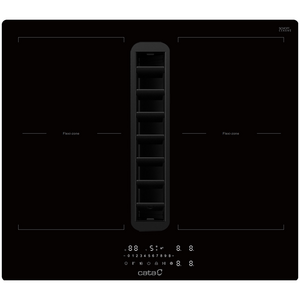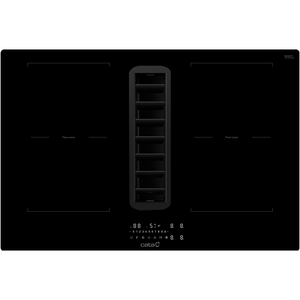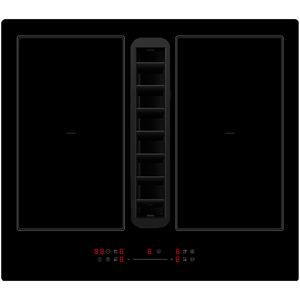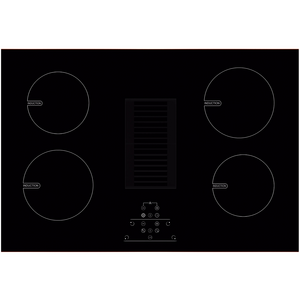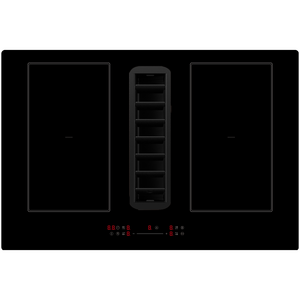Vented Induction Hobs combine cooking and extraction in one sleek unit, removing steam, smoke, and odours directly from the surface. Ideal for modern kitchens and open plan spaces, they eliminate the need for a separate cooker hood, offering a minimalist look with efficient ventilation.
How Do Vented Induction Hobs Work?
Vented induction hobs combine rapid, precise induction heating with an integrated extractor that captures steam and odours at the source. Air is drawn straight from the cooking surface into the central inlet, helping to prevent condensation and keeping open-plan spaces fresh.
Because induction heats the cookware directly, the glass stays comparatively cooler, reducing heat loss and improving safety. The extractor intake sits centrally or toward the rear, with a sealed tray and filters to trap grease before air continues through the system.
Ducted vs Recirculating Extraction
Ducted Extraction
This option is best for overall air quality. Moisture and smells are expelled outside, helping to reduce window misting and lingering cooking aromas. Plan the duct route early for islands and ensure smooth bends for efficient airflow.
Recirculating Extraction
This setup offers flexible installation without external ducting. Air passes through grease and charcoal filters before returning to the room. Regular maintenance is essential: wash grease filters often and replace charcoal filters every few months, depending on use.
Sizing, Airflow, and Noise
Most models are 75–77 cm wide. Compare airflow (m³/h) and noise levels (dB), along with features such as bridging zones and Power Boost. If you’re using a recirculating model, remember to account for ongoing filter costs.
Are Vented Induction Hobs Worth It?
For many homeowners, vented induction hobs are a modern and space-efficient upgrade that combines strong cooking performance with cleaner air. They suit open-plan layouts, provide effective ventilation at the source, and remove the need for an overhead cooker hood.
While installation and cost can be higher — particularly for ducted models — the sleek design and functional benefits often justify the investment. Recirculating versions are easier to fit but require periodic filter replacements to maintain airflow and odour control.
Explore our vented induction hob range to compare sizes and finishes, or visit product support for manuals, spare parts, and filter guidance.
